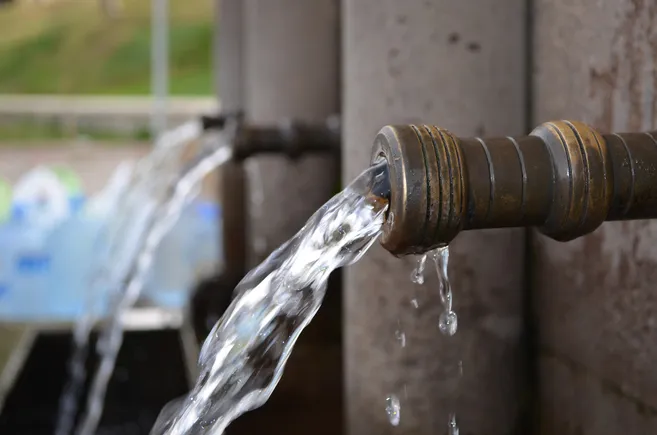Dive Brief:
- The Biden administration issued a final rule Tuesday requiring drinking water systems across the country to identify and replace lead pipes within 10 years, according to a news release from the EPA. The effort will cost tens of billions of dollars, according to The Washington Post.
- The Lead and Copper Rule Improvements also require more rigorous testing of drinking water and have a lower threshold for communities to take action on lead in their water supply. The rule imposes the strictest limits on lead in drinking water since the EPA first set standards in 1993.
- Lead is a potent neurotoxin, and there is no safe level of exposure nor a known antidote, according to the Centers for Disease Control and Prevention. Service lines, which connect a home‘s plumbing system to the water main in the street, are typically the most significant source of lead in drinking water, per the EPA.
Dive Insight:
The new rule follows an uptick in federal funding to address the problem: The Infrastructure Investment and Jobs Act contains $50 billion over five years to support upgrades to drinking water and wastewater infrastructure. This includes $15 billion to replace lead service lines and $11.7 billion of general Drinking Water State Revolving Funds that can be used for this purpose.
Communities from Milwaukee to Denver have already begun to tackle lead pipes with the help of IIJA funding, according to a White House news release. More than 367,000 lead pipes have been replaced during the Biden administration.
Lead pipes are most likely to be found in older cities and homes built before 1986, according to the EPA. The agency estimates that up to 9 million homes are served through legacy lead pipes across the country. The problem is particularly dire in midwest states and in Florida, according to a map from the Natural Resources Defense Council.
Lead is particularly harmful to babies, fetuses and children: It can severely harm childrens’ mental and physical development, slow learning and irreversibly damage the brain, according to the CDC. In adults, lead can cause increased blood pressure, heart disease, decreased kidney function and cancer.
We’ve known for decades that lead exposure has serious long-term impacts for children’s health. And yet, millions of lead service lines are still delivering drinking water to homes,” said EPA Administrator Michael Regan in the release.
In April of this year, the EPA also established a drinking water standard for PFAS, which have been linked to cancer, immune and developmental issues and other health impacts. It designated certain types of per- and polyfluoroalkyl substances, also known as PFAS or “forever chemicals,” as hazardous. Construction companies like Jacobs, AECOM and WSP said in recent earnings calls that they expect demand for PFAS remediation work to remain strong.

